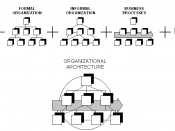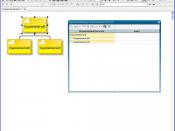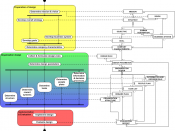While management theorists and business executives focus on marketing, finance, product design, and even manufacturing, the supply organization is often forgotten.
A wrong decision in supply organization design can result in a rapid loss of expertise and competitive stature by reducing a company's leverage and splitting supplier relationships across multiple sites, businesses, and geographies.
A Holistic Design Theory
As Shown in Exhibit 1, the model is used both for organizational assessment (is the organization "up to" the needs of the business?) and for organizational design (what organizational structure will meet our business needs?).
Business Strategy--The key choices that determine how company resources interact with the market.
Design Elements--The six essential elements of any organizational design: tasks, people, information, decision making, rewards, and structure. The writer of this article focusses on these elements applied to supply organizations.
The six design elements play out in an organization's culture. Business Results--The outputs of the organization-- for example, cost, market share, profit, sales, and innovation.
Unique Implications for Supply
When the above model is applied to a supply organization, the company must look at the design elements both from an external perspective and from an internal perspective.
Design Element 1: Tasks
When designing an organization, most managers leap directly to the structure of the group-- boxes, reporting lines, and responsibilities. Operationally linking with internal customers to understand business needs in order to accurately present those needs to suppliers and to provide internal functions with external supply market intelligence and actionable opportunities. These are the internal-facing tasks.
External-facing tasks form the core focus of a purchasing or supply organization: commodity management, industry interaction, and supplier relationship management. If a company just looked at the supply organization's external tasks, it would design the organization around commodity/industry clusters for common purchased items and around supplier coordination structures,


